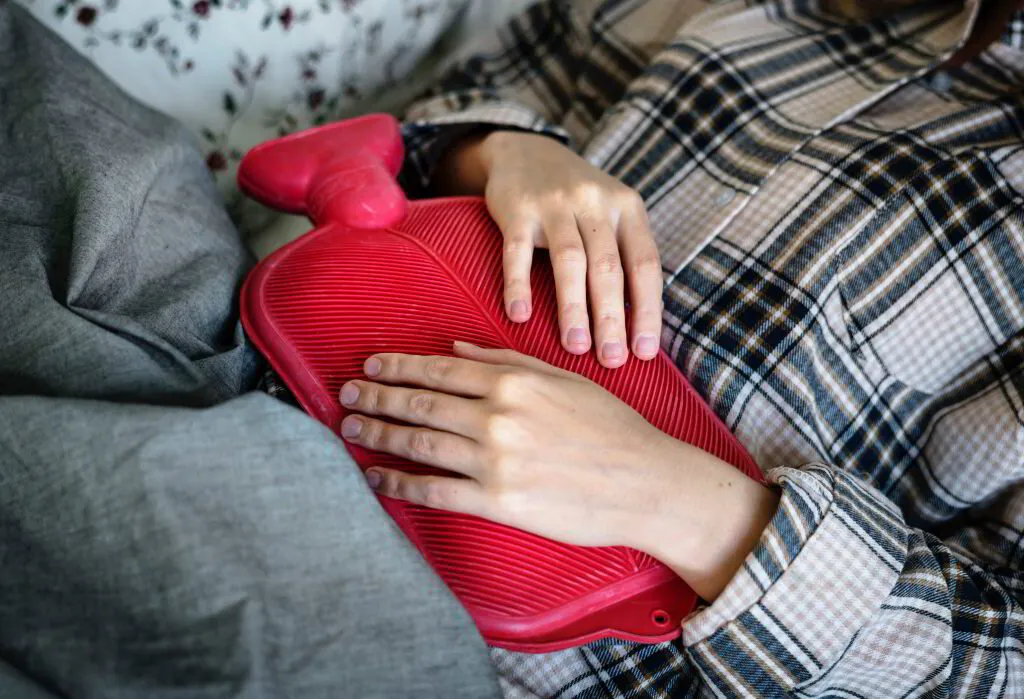“Dysmenorrhea” is a medical term used to describe painful menstruation. Painful menstruation is considered one of the most common conditions in women’s health. A study of menstruating Canadian women revealed that 60% reported experiencing pain around menses; 51% reported the pain affected their activities of daily living, and 17% reported missing work due to the pain.
[1] The social implications and prevalence of this condition warrant safe and sustainable treatments. This article will explain our current understanding of the cause of this pain and potential options for treatment.
Key Features
The initial onset of dysmenorrhea is typically within the first year of a woman’s first menstrual cycle, once ovulation begins to occur.[2] (If dysmenorrhea occurs later than this timeframe, secondary causes should be evaluated). The pain usually starts a few hours before menstrual flow and can last between two and three days. The pain occurs above the pelvis and is often described as cramping. It may be associated with nausea, vomiting, and diarrhea.[3] The current understanding of the cause of painful periods is an imbalance in a substance our body produces termed “spasmodic prostaglandins.” These prostaglandins cause contractions in the uterus, which decrease blood flow and causes pain.[2] During ovulation, the decrease in progesterone triggers the release of prostaglandins. For this reason, it is understood that primary dysmenorrhea occurs only during ovulatory cycles.[2] Conventional and natural treatments target this mechanism of action. Current conventional treatment includes nonsteroidal anti-inflammatory drugs (NSAIDs) like Aleve or Motrin and oral contraceptives. NSAIDs inhibit prostaglandin release, while oral contraceptives suppress ovulation, decrease menstrual volume, and decrease prostaglandins accordingly.[2] Although these treatments offer temporary relief, they do not correct the underlying imbalance.
Diet & Lifestyle
Dietary changes are an important part of an effective treatment plan. A therapeutic diet should focus on decreasing the production of spasmodic prostaglandins to reduce spasms, while increasing nutrients to promote blood flow in the pelvis. Arachidonic acid (AA) is found in a lot of different foods and is responsible for increasing our spasmodic prostaglandins. Avoiding food high in AA – including egg yolks, red meat, and poultry -reduces uterine contractions.[4] Saturated fats also stimulate prostaglandin production. Research has shown that when females consume a low-fat vegetarian diet, the intensity and duration of their pain decreases.[5] Foods that reduce menstrual cramps include fish (salmon, mackerel, tuna, halibut, and sardines), nuts and seeds (pumpkin, flax, sunflower, and sesame).
Identifying aggravating foods and eliminating them from the diet may also help reduce symptoms. Foods that promote gas and bloating in sensitive individuals, such as dairy and salt, may further aggravate menstrual pain.[4] Food sensitivities have also been associated with certain cases of dysmenorrhea.[7] Reducing intake of these foods can decrease overall discomfort and offer additional benefit to a therapeutic diet. A whole foods diet rich in fruits, vegetables, and whole grains (such as oats, millet, amaranth, and rye) will emphasize essential nutrients and fibre to optimize uterine function. Increasing fibre intake has also been shown to reduce menstrual pain.[8] Many vegetables are high in nutrients essential for optimal muscle function, such as magnesium, calcium, and potassium. In addition, fruits are rich in natural anti-inflammatory substances like bioflavonoids and vitamin C. These nutrients decrease overall inflammation and support circulation to areas of muscle tension to reduce menstrual pain.[4] Lifestyle factors also play a role in primary dysmenorrhea.
Smoking, sedentary lifestyle, and stress are associated with increased symptoms.[9] A recent controlled study found that women who exercised regularly experienced a greater positive effect in pain relief.[10]
An effective treatment approach to menstrual pain should reduce pain and address the cause. This requires a thorough review of diet and lifestyle habits that may be increasing inflammation in the body. While conventional medicine can halt the production of inflammatory prostaglandins through NSAID or oral contraceptive use, correcting imbalance through naturopathic approaches can create a sustainable solution to primary dysmenorrhea. Speak to your naturopathic doctor or healthcare provider to learn more about what may be causing your pain and what treatment options may be right for you.

